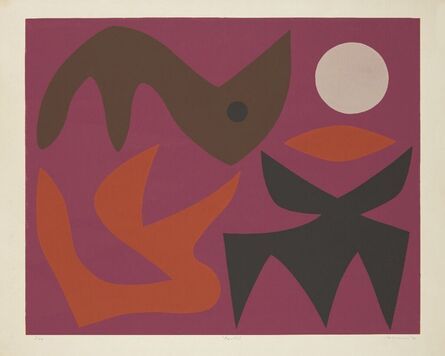John Coburn The Abstract Artist: Alchemist and the Audacity of Influence
- TNA Blog

- Jul 15
- 3 min read
The Unlikely Beginnings of an Abstract Visionary
John Coburn the abstract artist wasn’t born in an atelier. He landed in Ingham, Queensland, in 1925, the son of a sugar-cane farmer. By eighteen, he was serving as a radio operator in the Royal Australian Navy, sketching island silhouettes on the margins of his logbooks as his ship cut through the Pacific. Those early maps of light and shadow would later bloom into the flattened, jewel-like planes that define his abstract work.


From the Classroom to the Canvas
After World War II, Coburn traded his radio for a paintbrush, enrolling at East Sydney Technical College in 1947. A decade later, he was back teaching there, urging a new generation of artists to break rules rather than follow them. He never settled for dusty academic traditions. his lectures were as spare and punchy as his palette: bold, lean, and daring.

Forging a Signature Style
By the 1960s, Coburn had distilled his experiences. Naval maps, stained-glass windows glimpsed on holiday, and organic Queensland motifs; into flat, interlocking shapes. His canvases pulse with a restrained energy: arcs that loop like sea swells, circles that hover like suns, and plant-like forms that stretch toward an unseen horizon. It’s a style that feels at once timeless and unmistakably his.
Masterpieces on the World’s Stage

In 1969, Coburn received the commission of a lifetime: two colossal tapestries for the Sydney Opera House. Woven in Aubusson looms, Curtain of the Sun and Curtain of the Moon unfurled like chromatic dramas across the Joan Sutherland and Drama Theatres. They remain among the largest hand-woven tapestries on earth. A testament to Coburn’s belief that abstraction could both decorate and elevate a sacred public space.
Faith in form
John Coburn’s commitment to faith ran as deep as his mastery of colour. Born into an Anglican family in 1926, he embraced Roman Catholicism in 1953, a conversion that became the wellspring for much of his art. In addition to winning the Blake Prize for Religious Art twice, Coburn was invited to create Corpus Christi 2000, a monumental triptych commissioned to mark the new millennium—his rich hues and sacred geometry transforming abstract fields into a modern act of worship. Whether designing the Opera House’s “Curtain of the Sun” and “Curtain of the Moon” or seeing his Tree of Life tapestry installed in the Vatican, Coburn proved that abstraction could serve as spiritual expression.


Little-Known Facts That Reveal the Man
Blake Prize Double-Winner: Coburn captured the Blake Prize for Religious Art in 1960 and again in 1977, proving his abstract language resonated even in the most spiritual arenas.
ABC Stage Designer: Before his tapestries, Coburn painted sets for Australian Broadcasting’s live theatre productions—his bold shapes framing dramas from Melbourne to Sydney.
Teacher Turned Evangelist: He briefly headed the National Art School in the late ’70s, but he preferred getting his hands dirty in the studio to buried in bureaucracy.

A Legacy Woven Into Color
Coburn passed away in 2006, but his influence is everywhere: from public mosaics in Canberra to gallery walls in Tokyo. Today’s artsits, designers, and brand builders still borrow his approach was taking the raw abstractions of the past and twisting them, tilting them, until they become something entirely new.
Art Is a Conversation, Not a Cage
Coburn’s genius lay in translating the rhythms of life into bold, abstract language. His sweeping curves and confident angles taught us to study structure, absorb its energy, and then push it into uncharted territory. That same ethos drives us at TNA: we borrow a spark from Coburn’s vision, then ignite it through brand strategy, copywriting, marketing and design; until the result is unmistakably our own.
True creativity isn’t about hoarding a single style or planting a “no-trespassing” sign around your ideas. It’s the daily discipline of practice, the humility to learn from masters, and the courage to transform influence into something fresh. We honor our inspirations by understanding their blueprint, then re-imagining every element to serve a new purpose. At TNA, we live in that open field. Where vision and expertise collide to forge brands that are felt, remembered and celebrated. That’s the art form we practice every day: a seamless dance of business and boundless creativity.


























Comments